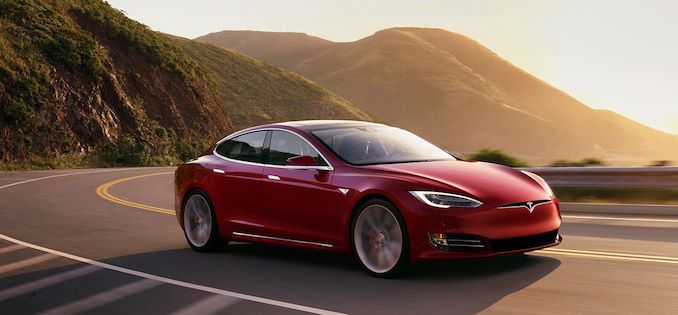Samsung & TSMC Develop 8nm & 7nm Automotive-Grade Nodes
by Anton Shilov on October 14, 2019 9:00 AM EST- Posted in
- Semiconductors
- Samsung
- TSMC
- 7nm
- Automotive
- 8nm
- 8LPP
- Samsung Foundry
- 8LPU
- N7
As vehicles are getting ‘smarter’ and gaining autopilot capabilities, it is easy to predict that the demand for higher-performing and more complex automotive SoCs will be growing rapidly in the coming years. To produce those SoCs, specialized manufacturing lines will be needed, which is why the two leading contract chip makers, Samsung and TSMC, are working on new nodes and IP aimed precisely at automobiles.
Samsung Foundry this past week said that in the near future it would introduce a version of its 8 nm process for automotive applications. At present, Samsung has two manufacturing processes that are defined as 8 nm: 8LPP and 8LPU, which are evolved from the company’s 10 nm node. It is likely that the automotive-grade 8 nm will be a further evolution of that technology. Right now, the most advanced nodes that Samsung uses to make chips for automobiles are its 28FDS and 14 nm technologies, so an 8 nm node will be a huge step forward.
Samsung did not disclose much about its automotive-grade 8 nm process, but the company did note that chips for cars have to comply with AEC-Q100 reliability standards, which mandates support for a -40°C to +105°C ambient operating temperature range, as well as a number of qualification reliability tests such as wear-out tests. Furthermore, to win designs with leading auto makers, these chips have to be made in facilities that have an IATF 16969-certified supply chain quality management system, which in short emphasizes defect prevention and variation reduction. Furthermore, any IP being fabbed, as well as development tools and the final devices themselves have to meet various ISO 26262 (aka ASIL) functional safety requirements, both individually and in context of a particular application.
Meanwhile, over in Taiwan, TSMC’s most advanced automotive-grade process technology today is 16FFC, which is current-generation as far as the automotive market is concerned, as it lags consumer SoC designers by two or three years. Looking towards the near future, TSMC has been developing an automotive-grade version of its N7 (1st Generation 7 nm) technology for quite a while, and expects it to be qualified by 2020. In fact, Synopsys has already developed essential automotive-grade IP for N7 (including DesignWare IP for LPDDR4X, MIPI CSI-2, MIPI D-PHY, and PCIe 4.0 IP), so chip designers are probably already working on new SoCs for vehicles to be made using TSMC’s leading-edge process.
Finally, while GlobalFoundries no longer develops leading-edge process technologies, it still has numerous nodes that can be used by the automotive industry for years to come, including 22FDX and 12LP. For now, these technologies are good enough for advanced SoCs, but it remains to be seen what the company offers to its clients from the auto industry.
Related Reading:
- Samsung Foundry Updates: 8LPU Added, EUVL on Track for HVM in 2019
- Samsung’s 8LPP Process Technology Qualified, Ready for Production
- Samsung’s Intros Exynos Auto V9 SoC: Octa-A76 Chip to Power Audi’s In-Vehicle Infotainment System
- GlobalFoundries and Synopsys Develop Automotive-Grade IP for 22FDX Process Tech
- Arm Unveils Arm Safety Ready Initiative, Cortex-A76AE Processor
- Imagination Launches PowerVR Automotive Initiative, 8XT-A GPU IP
- Bosch and NVIDIA Team Up for Xavier-Based Self-Driving Systems for Mass Market Cars













29 Comments
View All Comments
melgross - Tuesday, October 15, 2019 - link
I’m willing to bet that will change in another two years. Don’t you?FullmetalTitan - Thursday, October 17, 2019 - link
Completely wrong here buddy.The bulk of automotive cameras (side mirror, backup cam, etc.) are built on 28, 45, and 65nm nodes.
Memory controllers are built on 28/45nm mostly because yields are much much higher than a FinFET.
32nm and 28nm are grouped in most tech roadmaps, and frequently 32nm designs moved to 28nm and stayed there.
RF is still mostly on 28nm, since the analog components don't scale down with the logic when moving to 14/16nm or below. Some designs are built on FinFET nodes as they are using advanced logic (such as 5G modems or base station SOCs)
Arsenica - Monday, October 14, 2019 - link
Going below 12nm has not many advantages for automotive chips, except for advanced computer vision chips but their volume will remain low for at least another decade.Sensors and power electronics hardly use what we may call advanced nodes, and the power consumption and lower chip sizes of <12nm nodes don't really matter for automotive infotainment or controller chips.
melgross - Tuesday, October 15, 2019 - link
That’s for you to say, but it doesn’t seem true. If it were, these major companies wouldn’t be spending the huge amount of money on the 7nm node for this that they are spending. Smaller nodes mean more sophisticated chips, lower power chips, and very possibly, lower cost chips. All of that is at least as important in the automotive world as anywhere else.FullmetalTitan - Thursday, October 17, 2019 - link
Companies are chasing the bleeding edge because that is how technological progress works, but mostly because they have customers DEMANDING that research for mobile devices and CPUs. Automotive designs take a couple years to qualify, and then they have 10-20 year life spans at a minimum. if you think automotive is in the same dimension of development speed as mobile, you need to do some more research.Duncan Macdonald - Monday, October 14, 2019 - link
GF will gradually lose business - but in the meantime they are making profits. If they spent the money required to become competitive in 7nm, they would have gone bankrupt. Only 2 firms have enough business to make it economic to be a 7nm foundry TSMC and Samsung. GF is a tiddler compared to these two and could not afford the expenditure to keep up. (Intel will sooner or later get to a 7nm node out of necessity otherwise AMD will eat their business. However if AMD had not been successful with the Ryzen series then Intel might have stayed on 14nm for another decade rather than spend the multiple billions that 7nm requires.)Kevin G - Tuesday, October 15, 2019 - link
Eh? Intel tried its hand at being a foundry itself and the flagship process for that venture is (was?) 10 nm. The big Altera FPGAs were announced using it before Intel simply just bought Altera. Intel bought out several other firms looking to use them as a foundry. I have this nagging feeling that these were motivated to head off any sort of lawsuit for failure to deliver 10 nm on time. Regardless of the reasoning, Intel did have motivation to get 10 nm working as they had fab customers now who needed it.haukionkannel - Tuesday, October 15, 2019 - link
Only minus 40 celsius... what happens to these chips at minus 60? The car does not work? There is chip warming system in the car?All in all lower than minus 40 is rare, but there Are areas where it will happen...
nevcairiel - Tuesday, October 15, 2019 - link
At -40C you probably run into various issues already if you don't have a heating system (for example, diesel will turn into a gel, and petrol might also start to get issues), and vehicles made for areas where this is common will probably use rather special setups.